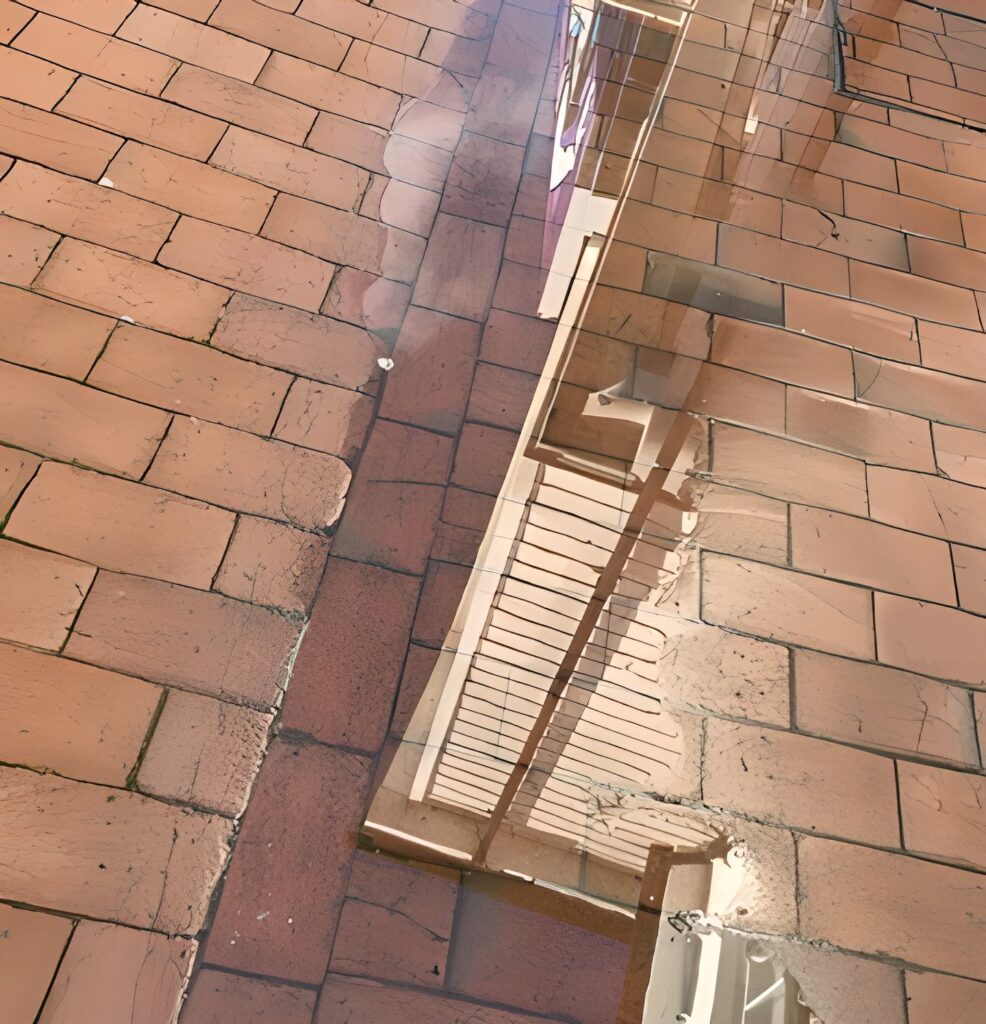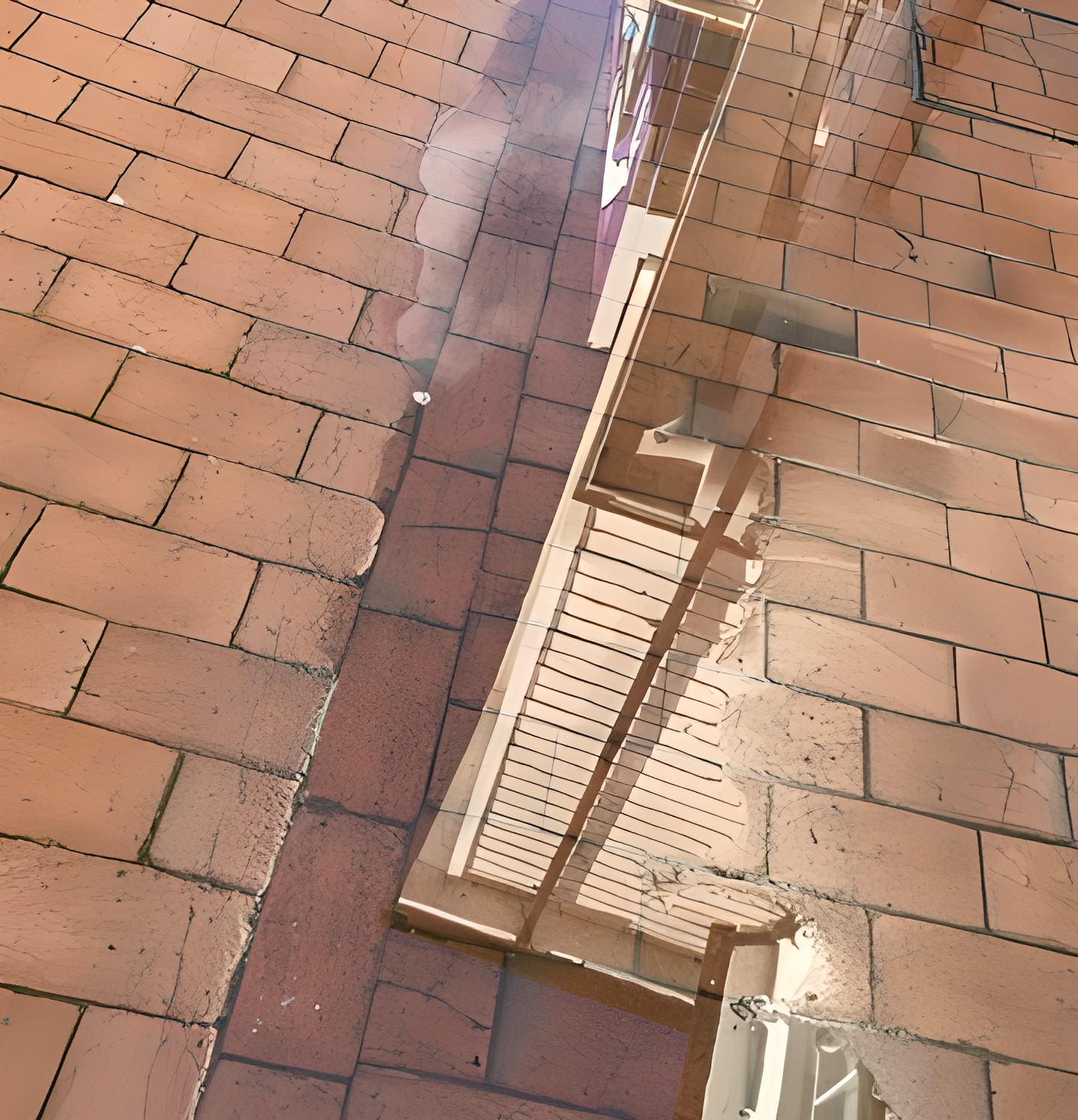1. Visual Analysis
This image is a masterclass in perception, bending reality and challenging the viewer’s understanding of form and space.
- Composition: The composition is defined by the interplay of surfaces and lines. The brick-paved ground occupies the frame while the reflection of a building introduces a secondary dimension. The sharp lines of the bricks intersect with the soft, rippling edges of the reflected architecture, creating an elegant juxtaposition of the tangible and intangible.
- Light: Natural light plays a central role, illuminating the warm terracotta tones of the brick while enhancing the smooth surface of the reflected building. The subtle presence of water catches and bends the light, creating a reflective quality that bridges two worlds—what’s above and what’s beneath.
- Texture: The bricks offer a rough, grounded texture, showing weathered cracks and imperfections. In contrast, the reflection in the water feels fluid, smooth, and ethereal—blurring the hardness of the structure it mirrors.
- Perspective: The camera angle is intentionally flat yet immersive, placing the viewer in limbo between surface and reflection. The absence of a clear horizon heightens the disorientation, inviting contemplation.
2. Philosophical Reflection
This image is a meditation on illusion, perception, and the delicate line between what is real and what is imagined.
- The Illusion of Reality: The reflection creates a world within a world, yet it is transient, dependent on a thin layer of water. What we see is both real and unreal, a fleeting echo of something solid and fixed. In this, the photograph reflects the Zen principle of maya—the illusory nature of existence.
- The Duality of Surfaces: The bricks ground us—they are firm, enduring, and tangible. The reflection, by contrast, exists only because of water and light, elements as impermanent as time. Yet, both are part of the same frame, illustrating the harmony between what is firm and what is fleeting.
- Stillness in Motion: While the water suggests quiet stillness, the reflected building appears almost alive, distorted by ripples and bends. It is a reminder that even in stillness, there is movement, and even in solidity, there is impermanence.
3. Practical Photography Insights
This photograph teaches the value of capturing unexpected beauty by paying attention to reflections and contrasts.
- Seek Reflections: Reflections in water or glass can transform an ordinary scene into something otherworldly. Look for puddles, calm bodies of water, or shiny surfaces to discover unexpected dimensions.
- Balance Texture and Smoothness: The contrast between rough textures (such as bricks) and smooth reflections creates a visual tension that draws the eye.
- Emphasize Lines and Shapes: Use geometric patterns like the lines of bricks or the architectural forms within reflections to create balance and structure.
- Mind the Light: Reflections are dependent on good lighting. Early morning or late afternoon light works best for enhancing depth, while soft light reduces harsh glare in water.
Tip: Focus on reflections not as accessories but as equal subjects in the frame. Experiment with angles that blur the boundary between surface and reflection.
4. Reflections
We live on solid ground, or so we believe. Bricks beneath our feet remind us of history, of permanence, of lives layered one atop another. And yet, one inch of water is enough to unravel the certainty of that world. Here, the bricks hold their ground, but the reflection rises—a fractured echo of the unseen above.
The building bends into water like a memory, shimmering and incomplete. It exists not as what it is, but as what it appears to be—a fleeting, liquid version of itself. We are no different. We think of ourselves as fixed, but one ripple—a thought, a change, a moment—and we are distorted, unrecognizable, yet still ourselves.
This photograph invites us to reconsider perception. What is the ground, and what is the reflection? What is real, and what is illusion? There is no answer, only the knowing that both are part of the same whole—held together by a thin veil of water and light.
If you pause long enough, you might see yourself here too. In the cracks, in the ripples, in the dance between solidity and surrender. For a moment, we are both the bricks and the reflection—grounded, yet fluid. Permanent, yet passing.

